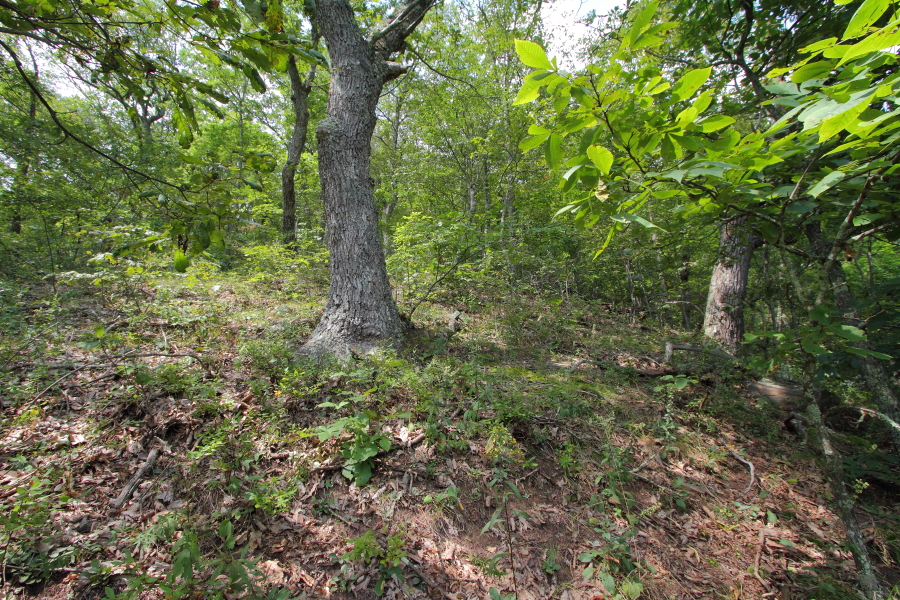
More than 800 acres, mostly in Giles County, have been purchased by the Virginia Department of Conservation and Recreation, protecting many forest species, including chestnut oaks that are over 300 years old, and expanding an existing natural area preserve within an important ecological forest core.
Funds for the acquisition were awarded from the Forest CORE Fund — a component of the Virginia Outdoors Foundation’s TERRA program.
The land will be managed to protect old-growth trees and to promote nature-based carbon sequestration through proforestation — a practice of growing existing forests to their ecological potential — with the possibility of reintroducing the once dominant American chestnut (Castanea dentata) and another decimated species, the butternut tree (Juglans cinerea).
The acquisition expands the 233-acre Chestnut Ridge Natural Area Preserve by 587 acres and brings the privately owned preserve under DCR ownership.
Most of the acreage is in far western Giles County with a small section located in neighboring Bland County.
All 820 acres are now permanently protected as part of the Virginia Natural Area Preserve System, which is managed by the Virginia Natural Heritage Program at DCR.
There are no public access facilities, parking areas or established trails on the property, but DCR will explore the feasibility of public access in the future.
“The acquisition and protection of additional lands at Chestnut Ridge Natural Area Preserve sets the stage for projects aimed at protecting and restoring Virginia’s native biodiversity and landscapes that keep Virginia resilient to a changing climate,” DCR Director Clyde E. Cristman said.
Bob and Darlinda Gilvary, owners of Gilginia Tree Farm LLC, are the sellers. They purchased the property in the late 1990s and together managed the forest, selecting and harvesting individual trees themselves, always careful to leave the oldest trees and a variety of other mature healthy stock for regeneration.
“Years ago, my husband and I decided to keep the whole land in forest,” said Darlinda Gilvary, who lives in a cottage near the preserve. “We did it to protect the environment and to protect water quality. It is important to us to leave it in good hands.”
As the preserve’s name suggests, American chestnut once comprised a major component of this forest, and evidence remains of its former abundance. Chestnut may have accounted for nearly 25% of trees across the Appalachian region, historically, but populations were wiped out by chestnut blight fungus in the early 1900s. As blight-resistant chestnuts are developed, DCR may restore this iconic species to the preserve.
Butternut, or white walnut, also was widespread across much of eastern North America but has declined by an estimated 58% since the 1980s due to a fungal disease called butternut canker. Scientists have found evidence that disease-resistant butternut trees may occur at Chestnut Ridge Natural Area Preserve.

This is a very good thing glad you have done this
Comments are closed.